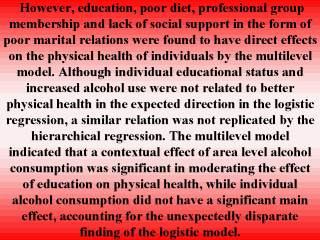 |
Contextual
effects of urban areas moderated the relationship of gender, age, and education on
physical health, specifying the structural conditions under which these groups became
vulnerable to a greater risk for poor physical health. Living in areas with greater
poverty risks increased the likelihood of poor physical health among younger residents,
while greater relative income inequality made women more vulnerable for poor physical
health than men. Living in urban areas with increased levels of alcohol consumption put
residents with lower education at greater risk for poor health. |
